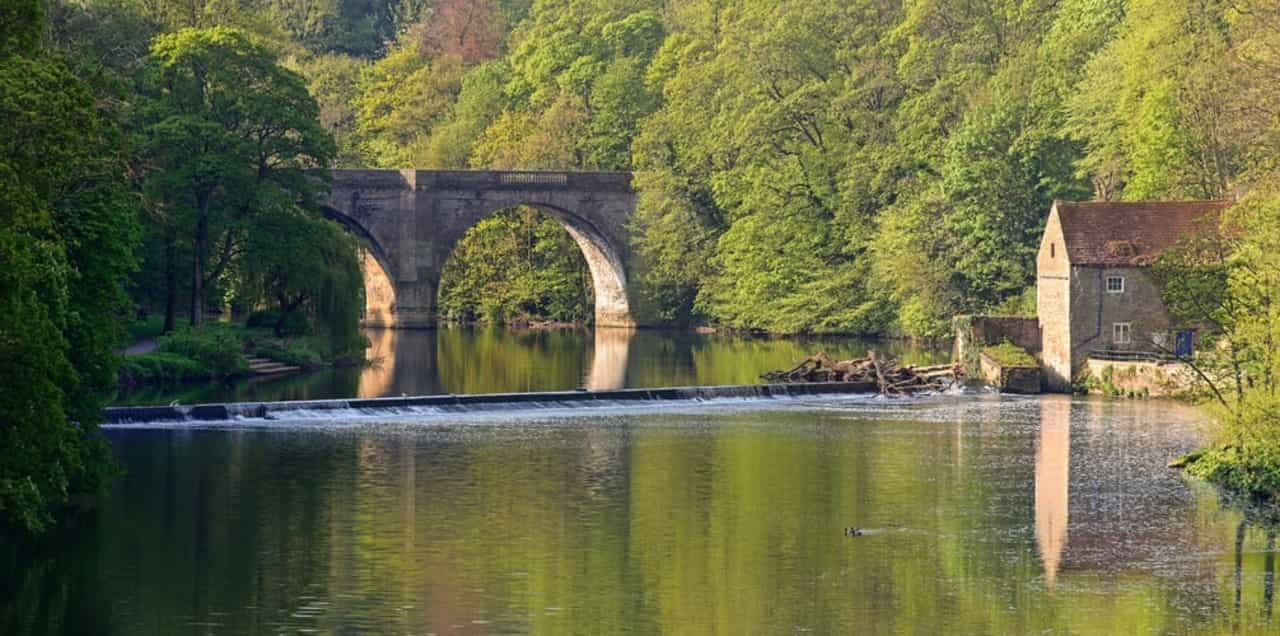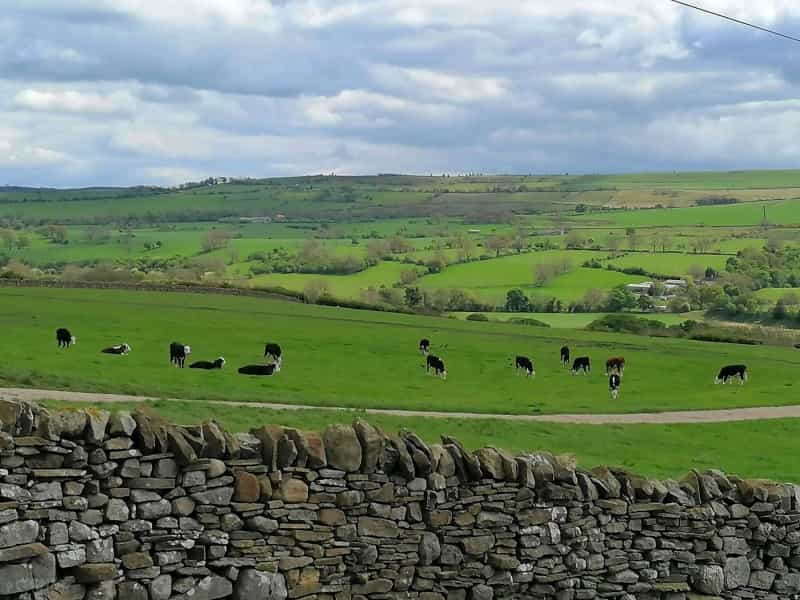Our 7 Top Things To Do in Durham
There’s certainly no shortage of things to do in Durham. Durham Cathedral, the last resting place of St Cuthbert, and Norman Durham Castle were together named a UNESCO World Heritage Site in 1986. A further 500 or so listed buildings make the city centre conservation area a dream for architecture and history buffs. It’s definitely worth checking out St Oswald’s Church, and the stately 14th-century interior of Durham Town Hall too.
Walks in Wharton Park and along the river Wear both have great views of the city, while a visitor centre in Palace Green Library is full of information on all the best places to explore, including details of walking tours and guided tours.
For centuries, Durham’s Prince Bishops ruled as virtual kings, in exchange for protecting the country from Scottish invaders. In nearby Bishop Auckland, Auckland Park and Castle is a grand testament to their influence. Also within easy reach of town are the atmospheric remains of 12th-century Finchale Priory and Raby Castle, a medieval stronghold set in 200 acres of parkland.And of course, to the west of the city you can walk for miles in the glorious Durham Dales.
With all this waiting for you, there’s no time to waste, so check out the list of our top 7 things to do in Durham.

Durham Cathedral
The best example of Norman architecture in the country, Durham’s cathedral contains the relics of no less than 3 saints – Cuthbert, the Venerable Bede, and Oswald. Renowned for its Romanesque features and fabulous vaulted ceilings, the cathedral's highlights include the medieval wall paintings in Galilee Chapel, home to the tomb of the Venerable Bede, and a stunning Rose Window in the Gothic Chapel of the Nine Altars. The Cloister doubled as the Hogwarts courtyard in the Harry Potter films, while the Monks’ Dormitory and Great Kitchen are reminders of the building’s history as a center for Benedictine monks.
The cathedral runs two or three guided tours every day. There’s also an interactive on-site museum with artefacts and audiovisual displays documenting the building’s history, and you can climb the 325 steps to the top of the tower for sweeping city views.
Durham Castle
This hilltop Norman Castle was once the residence of Durham’s all-powerful Prince Bishops, and its grassy precinct and historic outbuildings reflect their privileged status. It has been one of Durham University’s Colleges since 1837, but you can still take in the 11th-century chapel, the Tunstall Gallery and the Great Hall through pre-booked visits and 45-minute guided tours.
Palace Green Library
Set on a grassy quadrangle with views of the castle, Palace Green Library is part of the University, but undoubtedly worth a mention in its own right. It’s home to a Museum of Archaeology that features changing exhibitions on subjects like local prehistoric and Roman history, while the DLI Gallery has paintings and military artefacts that tell the story of the Durham Light Infantry, a proud army regiment who fought in battles from Napoleonic times until the Second World War. Watch out for the gargoyles on the building too, which were given the faces of university staff in the 19th century.
Conveniently, the library also houses the World Heritage Site Visitor Centre, a one-stop shop for information on the city, its history, and all the sites to explore around Durham.
Durham Dales

Hikers and cyclists are big fans of this huge expanse of heather-covered moorland, rolling hills, reservoirs and river valleys, dotted with country pubs and quiet villages. It’s home to more than 30 miles of cycling trails in Hamsterley Forest, riverside remains at Egglestone Abbey and Barnard Castle, and an impressive European art collection at the Bowes Museum. With a little digging you can find places to fish for trout, trek with alpacas or watch falconry displays.
If you want to take it all in with a little less effort, try a ride on the Weardale Railway, with vintage carriages pulled by heritage trains. Last but not least, the remote countryside in the North Pennines area of the Dales has 16 Dark Skies Discovery Sites – just the place if you know any budding astronomers…
Ready to escape to the country? Click here to check availability at every single one of our campsites in County Durham.
Auckland Park and Castle
Set in formal gardens and parkland overlooking the river Wear, a 20-minute drive from the city centre, Auckland Castle became the new residence of Durham’s Prince Bishops when they moved to be closer to their rural hunting estates. Filled with art and ornate period furnishings, its Georgian State Rooms have been restored to their original Gothic design. St. Peter’s Chapel is home to a decorative ceiling and elaborate wood carvings, and the Bishop Trevor Gallery stages art exhibitions. Outside, you can wander formal gardens dotted with follies, fish ponds and bridges, or book a guided garden tour.
Today, the estate is a deer park, where you can roam along medieval footpaths through rivers and woodland for free. Look out for the palatial Gothic Revival Deer House, surely the grandest animal feeding station you’ll ever come across.
Finchale Priory
Only five miles from town and free to explore, the spectacular remains of this 13th-century abbey sit in a wooded area alongside the river Wear. A stroll among its well-preserved walls and towers, complete with carved stone pillars and arched windows, reveals the ruins of the original church that occupied the site before the priory was built, and the tomb of St. Godric, the 11th-century sailor and pilgrim who established the hermitage there. He obviously couldn’t bear to leave, reportedly living here to the age of 100.
If you’re feeling fit, it’s a pleasant walk or cycle ride here from the city centre – just follow the river.
Raby Castle
A 30-minute drive from the city, this medieval castle with towers, turrets and battlements dating back to the 11th century was built by the Nevill family and remained their home for 200 years. Inside, you can admire immaculately recreated medieval, Regency and Victorian interiors filled with art, furniture, tapestries and sculpture. The stables and the courtyard now house a café, historic equestrian equipment and a collection of 18th and 19th-century carriages. A castle tour is included in the price of the entrance ticket.
Outside, beyond the five acres of walled ornamental gardens, you can join the herds of red and fallow deer to roam the peaceful 200-acre estate, and seek out the spectacular High Force Waterfall. There’s an adventure playground in the woods for kids, and you can hire a bike to explore further afield.
If walking’s your idea of time well spent, here’s a guide to the best walks in Durham.
If it wouldn’t be a holiday without getting some sand between your toes, here are some must-visit beaches near Durham.
Eating out? Here’s a list of the best food places in Durham.
Do you fancy a weekend break in Durham? Looking for a place to stay? Have a look at our North East England Camping Guide.